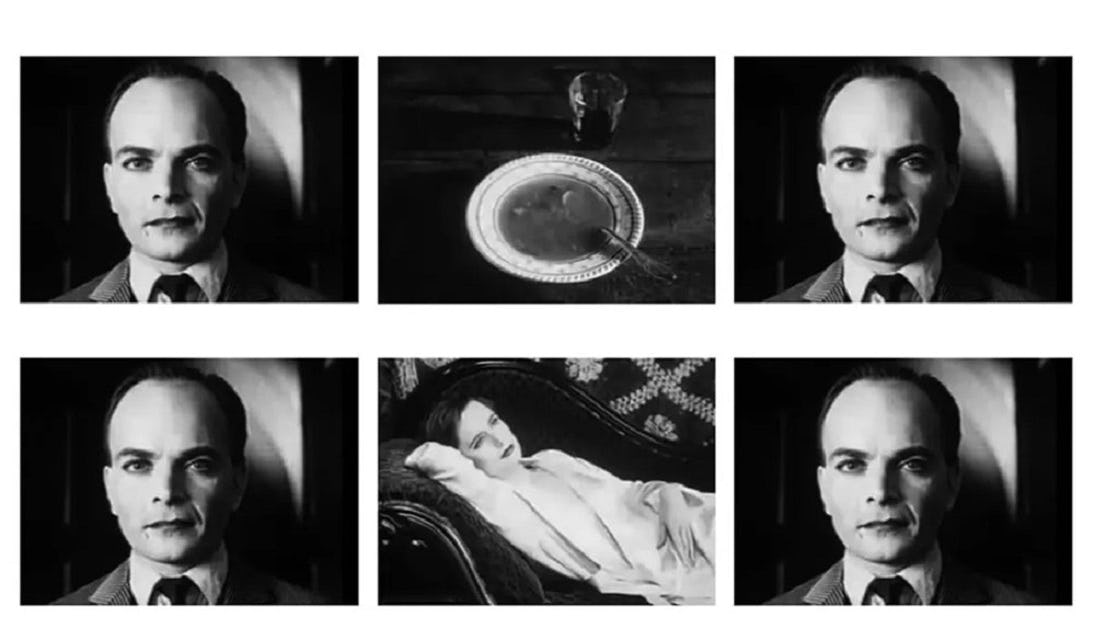
A man stares blankly ahead of him. Next, an image of a child playing happily with a dog. Back to the man again, with the same expression. Although, do we read fondness in that blank face? Nostalgia? Serenity? Suddenly, we switch to an image of a child in a coffin. Back to the man — this time, his expression is clearly one of grief and sadness.
But that’s not the case. This man’s expression has stayed the same throughout these images; we’re just projecting our own emotions onto his blank canvas of a face. This mental phenomenon is called the Kuleshov effect, pioneered by Russian filmmaker Lev Kuleshov in the 1910s and 1920s. Kuleshov used it to prove the power of film editing, particularly of the montage. He asserted that filmmakers could harness the emotional reactions that viewers brought to a particular image and fundamentally change their perceptions.
Kuleshov’s technique has been employed in many great films, but rarely to such mind-blowing and devastating effect as in Denis Villeneuve’s cerebral sci-fi masterwork, Arrival. The 2016 movie plays with our perceptions, building up to a reveal that retroactively changes the viewer’s assumptions about the whole story. Through that, it weaves in the idea that the most powerful thing one can do is change someone’s mind.
Arrival begins, fittingly, with a montage: the life and death of linguist Louise Banks’ (Amy Adams) daughter Hannah, who dies at just 12 years old from an incurable disease. Louise is grief-stricken, and we assume this grief follows her as she’s recruited to help translate communications between the U.S. government and the cephalopod-like aliens who have just landed on Earth.

The movie sets us up for this assumption — traditional movie structure dictates that this kind of montage at the beginning of a film is a flashback, one that establishes who our lead character is and what trauma drives them. Louise’s opening narration even goes, “I’m not so sure I believe in beginnings and endings. There are days that define your story beyond your life. Like the day they arrived,” making us assume she’s referring to Hannah’s death as a past event, taking place before the arrival of the “heptapods.” And then there’s Amy Adams’ subdued performance as Louise, who acts like we’d assume a grieving mother to act. She’s quiet, reserved, and lives in a house that’s way too big for her. Her somber face must be one of grief over a lost child, right?
Little details and revelations support this. Louise vaguely hints at a bad relationship history, while the flashes to Louise and Hannah’s life reveal that Hannah’s dad left them. The increasing frequency of these hazy, dreamy flashes of Hannah, which come as the pressures of Louise’s task start to wear on her mind, only supports what we think are the effects of grief. It’s the Kuleshov effect at work: first, we see Hannah, then we cut to Louise looking troubled. It’s only when the third-act twist hits that our assumptions are flipped on their heads.

By the time Arrival rolled around, the big plot twist was more than played out. The mystery box rendered it redundant, while a shocking death on The Walking Dead or Game of Thrones every week rendered it useless. But the brilliance of Arrival is that its twist isn’t really a twist; it’s a revelation. The clues were given to us, but we put them together in the wrong way. Through a few cleverly placed visions and Amy Adams’ tremendously subtle performance, Arrival managed to interweave two parallel stories of how humans can let their preconceived notions get the better of them: one the characters are experiencing, and one the audience discovers they are experiencing.
It’s clever misdirection by Villeneuve and screenwriter Eric Heisserer, who reach for a greater narrative purpose than an empty “gotcha!” Instead, Arrival dares us to change our minds, and ponder whether our first instincts for violence and action are correct. By thinking a different way, in a different language, can we “rewire” our brains? As past and present fold in on themselves, Arrival argues we can. Perhaps, as in the case of Louise, changing our first instinct to be one of kindness and empathy can bring pain down the road. But Arrival’s gentle vision of humanistic sci-fi shows how much richer that experience can be.







